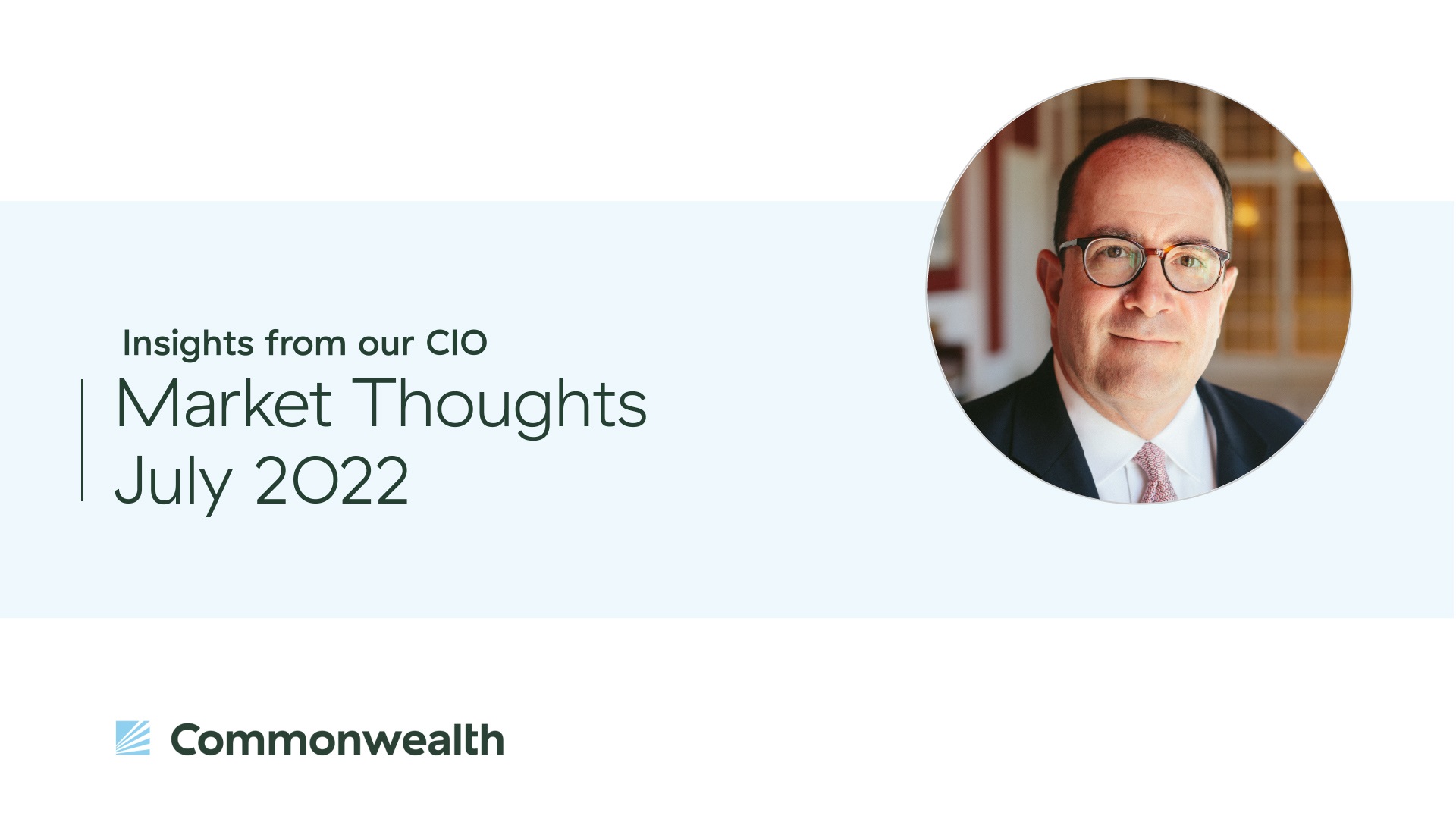June was a terrible month, with stock markets in the U.S. and abroad down substantially and developed international markets hit the hardest. The underlying reason? The Fed. With inflation high, the Fed has raised interest rates over the past six months, which has driven the risks of a recession. Still, the economic news is healthy. Companies are hiring, supporting spending growth, and business investment is sound.
News
Rising Inflation: Where Does It Go from Here?
We’ve received numerous questions about our inflation outlook over the past few weeks. In some cases, it seems investors are beginning to throw in the towel on traditional asset classes in favor of more inflation-sensitive areas like commodities, real assets, and managed futures, which have had a good run as of late. Before making wholesale changes to portfolios, though, it’s important to understand where inflation may be headed, as opposed to where it’s been.
Headlines are telling us that the Fed let things get out of control, with inflation at its highest level in 40 years and stagflation right around the corner. I would argue that the consensus on inflation could be wrong, mostly because the numbers are suggesting that things have already peaked and will probably moderate as the year progresses. So, let’s have a look at the data and cut through the headlines.
Monday Update: Existing Home Sales Decline in May
It was a relatively quiet week for economic updates, with only one major data release last week. Existing home sales fell in May, marking four consecutive months of slower sales and highlighting the headwinds for the housing industry created by rising prices and mortgage rates. This will be a busier week of updates, with reports scheduled that will touch on business spending, consumer and manufacturer confidence, and personal income and spending.
Catherine Crowe McMillan: A Life Well Lived
Today will not be the usual economic content, as I am out of the office for my mother’s memorial service. She passed away almost a month ago, suddenly from a stroke, after fighting Parkinson’s disease for several years. My dad and my family are doing well, all things considered, but today will be a hard one.
Politics and Investing
First, a confession. I handled a recent comment on the blog badly. A reader wrote in with a question that I read as a political diatribe, and I dismissed it without taking the question itself seriously. I realized that my response was wrong and have since apologized, publicly, in the comment section of that post. I owe my readers, if I can respond at all, a thoughtful engagement with their issue, and I failed that standard. I will try to do better going forward.
Monday Update: Home Construction Slows and Fed Hikes Rates
There were several important economic data releases last week with a focus on housing and the results from the most recent Fed meeting. The reports showed that housing construction slowed in May, reflecting lower demand for housing due to rising prices and mortgage rates. This will be a relatively quiet week of updates, with only one major report scheduled for release.








 Olivia has joined Riverstone Wealth Partners providing knowledge gained from her 15 plus years in management. Olivia has provided services within the financial industry, mortgage industry, and in the non-profit sector. Olivia thrives on providing stellar customer service, accomplishing all goals set before her, and doing the right thing. Olivia’s degree in Business Management allowed her to take on roles that ultimately led her to Riverstone Wealth Partners. Olivia is currently pursuing another degree with an emphasizes in Human Resources, which she has learned over time… is her passion!
Olivia has joined Riverstone Wealth Partners providing knowledge gained from her 15 plus years in management. Olivia has provided services within the financial industry, mortgage industry, and in the non-profit sector. Olivia thrives on providing stellar customer service, accomplishing all goals set before her, and doing the right thing. Olivia’s degree in Business Management allowed her to take on roles that ultimately led her to Riverstone Wealth Partners. Olivia is currently pursuing another degree with an emphasizes in Human Resources, which she has learned over time… is her passion!



 Director of Operations
Director of Operations

 Ashley has been working in the customer service field since she started her first job at age 16. For the past ten years she worked in an office setting handling accounts payable and receivable as well as some receptionist work. She is very excited to learn more about the investment field.
Ashley has been working in the customer service field since she started her first job at age 16. For the past ten years she worked in an office setting handling accounts payable and receivable as well as some receptionist work. She is very excited to learn more about the investment field. Alec joined Riverstone after starting out his post college career on the operations side of an international logistics company working as an account executive. Graduating with a BA in Economics from the University of Illinois at Urbana-Champaign, he quickly developed a strong interest in the financial world. A lifetime resident of the Chicagoland area, Alec is an avid fan of his hometown sports teams. He is also an enthusiast of outdoor activities like fishing, camping, and hiking whenever possible.
Alec joined Riverstone after starting out his post college career on the operations side of an international logistics company working as an account executive. Graduating with a BA in Economics from the University of Illinois at Urbana-Champaign, he quickly developed a strong interest in the financial world. A lifetime resident of the Chicagoland area, Alec is an avid fan of his hometown sports teams. He is also an enthusiast of outdoor activities like fishing, camping, and hiking whenever possible. Wealth Advisor
Wealth Advisor Wealth Advisor / Registered Principal
Wealth Advisor / Registered Principal Wealth Advisor
Wealth Advisor Wealth Advisor / Registered Principal
Wealth Advisor / Registered Principal Wealth Advisor
Wealth Advisor Wealth Advisor Assistant
Wealth Advisor Assistant Registered Relationship Assistant
Registered Relationship Assistant